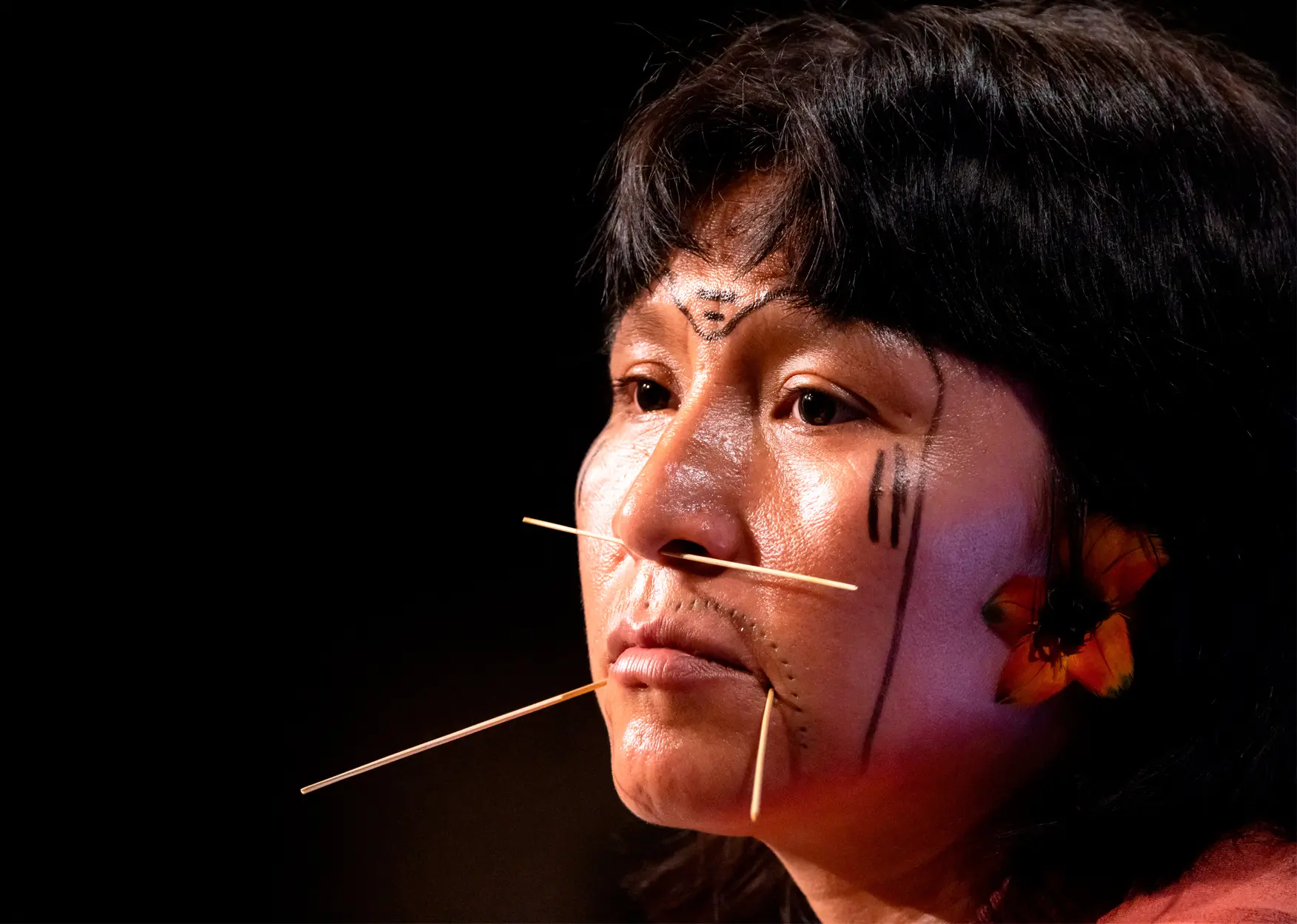On the afternoon of February 8, 2023, a group of Yudjá (Juruna) indigenous researchers from the Paquiçamba Indigenous Land, accompanied by scientists, arrived at a site on the banks of the Xingu, four kilometers upstream of the village Muratu, and encountered a scene of devastation: millions of fish eggs, mainly of the Curimata genus of freshwater fish, were drying out on riverbanks. Unable to hatch into new fish, they were effectively dead. The place where the discovery was made is known as Odilo’s spawning area. What used to be a nursery, a refuge for the reproduction of aquatic fauna, has been turned into an open-air tomb. The future of the species and ecosystem of the so-called Big Bend of the Xingu died on that very spot. The cause: since 2015, the Belo Monte Hydroelectric Plant has been diverting 70% of the water from this region to drive its turbines.
The indigenous people recorded the horrifying scenes in photos and videos, noted down the longitude and latitude, returned to the village and called Ibama (Brazilian Institute for the Environment and Renewable Natural Resources), responsible for the hydroelectric plant’s licensing and for the defense of Amazonian ecosystems. The following day, February 9, a team from Ibama was in the region to investigate the complaint. SUMAÚMA tried, but could not get conclusive answers from the members of the inspection team. One of them mentioned they were drawing up a document for the Federal Public Prosecutor’s Office (MPF) in the municipality of Altamira. They informed the indigenous people they were preparing a report on what they saw, to be forwarded to the Environmental Licensing Department (Dilic), which is responsible for authorizing, monitoring, controlling and supposedly avoiding the negative impacts of the Belo Monte dam.
It should be pointed out that from November to April, fishermen in the region are prohibited from fishing, either for trade or for food, because this is the off-season. During this fish spawning season, fishing is prohibited in order to ensure the reproduction of aquatic species. However, in the Middle Xingu stretch, it is not fishing that is threatening fish reproduction. It is hard to calculate the exact number of dead eggs that appear in the images taken in Odilo’s spawning ground. But if we take into account that a female curimatá fish usually carries 500,000 eggs, we can argue that millions have perished.
“Thinking about what it would look like to human eyes, it was very sad, to see those curimatá at the mouth of the Xingu, waiting to spawn. It is like a mother who is in labor and in pain. Like every mother, she wants a the best place to have her babies. And when she arrives at the spawning grounds, as if it were the maternity hospital, she finds everything has been destroyed, torn down by human beings. That was the place where she was born, where her parents gave birth to her. She took her children there because she believed it was the best place for them to be born, and she finds that everything has been destroyed. She looks at her belly and says: my child, I am sorry, but there is no safe place to give birth, so she spawns where it is unsafe and returns to the river in tears. She can’t even stay there, because she will end up dying, she will end up trapped during the dry spawning season. And that’s the way it is for many curimatás. I think they must be there in the Xingu crying, not knowing if their babies will be born”, described Josiel Juruna, one of the indigenous people who discovered the fish bloodbath, and who is the coordinator of an independent monitoring project on the Belo Monte dam’s impact on the region.
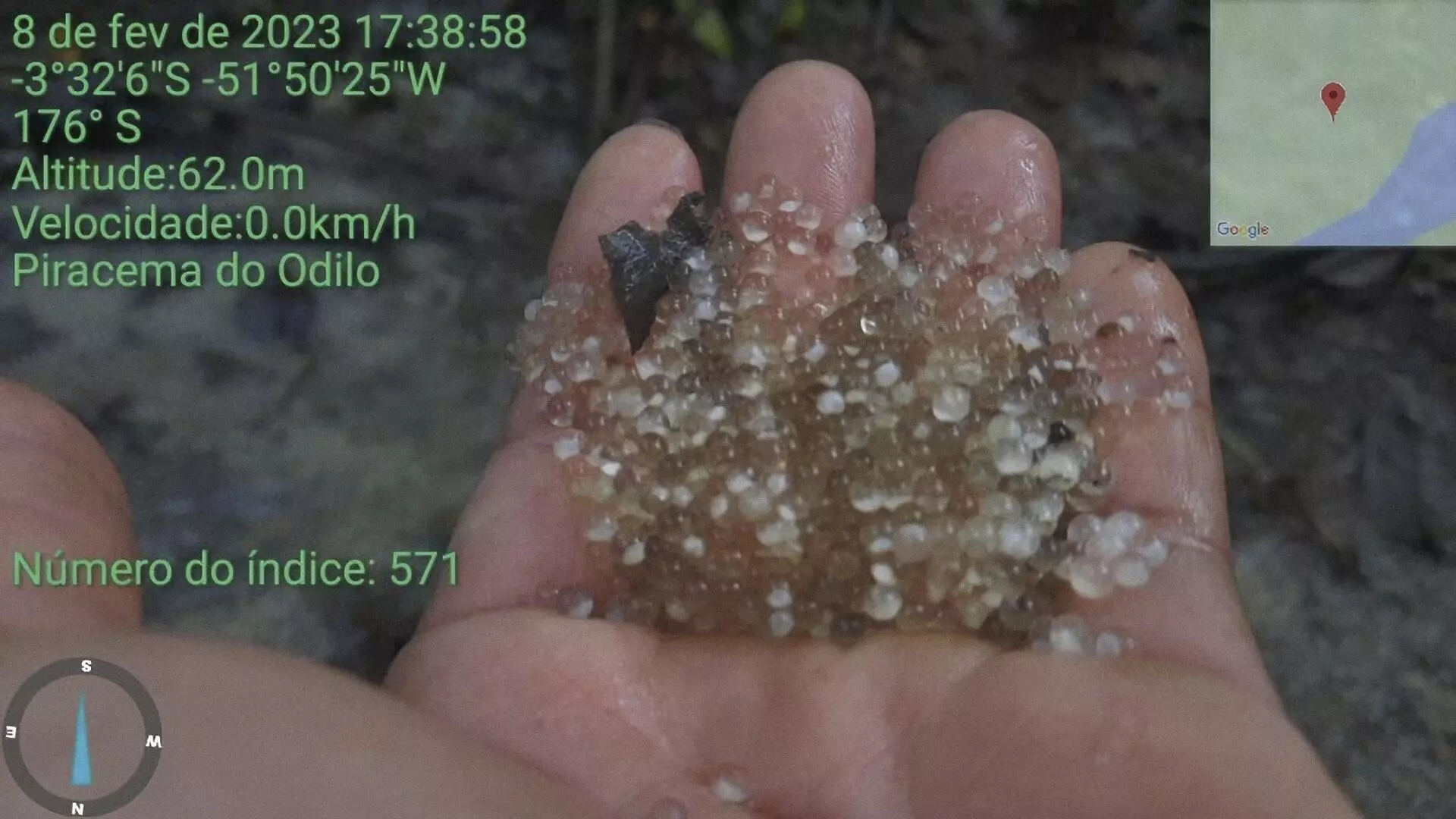
A fistful of eggs in the hand of one of the researchers, out of the millions that will never
become fish. PHOTO: INDEPENDENT TERRITORIAL ENVIRONMENTAL MONITORING OF THE BIG
BEND OF THE XINGU (MATI-VGX)
The first warning sign that something serious might be occurring in Odilo’s spawning ground was when men from Muratu village noticed the curimatás were approaching the entrance, on February 7. They became worried, because this indicated the mothers were trying to go up the floodable areas on the river bank to spawn. A natural process and one that should have been taking place without any problems since November last year, which was the start of the current breeding season of aquatic species. But nature ceased to be the deciding factor of events in the region of the Amazon basin’s third largest tributary when the Belo Monte hydroelectric power plant began operating in November 2015.
In official documents the region is called the “Reduced Flow Stretch,” in yet another attempt to reduce nature to red tape that also kills with its language. Norte Energia, the owner of Belo Monte, is obliged to monitor the region, but always downplays the damage that residents witness in their daily lives. For this reason, since 2019 there has been a joint effort by indigenous people, riverbank dwellers and researchers from a number of Brazilian universities to independently monitor the spawning grounds of the Volte Grande (Big Bend) of the Xingu. This project is known as Mati-VGX.
Researcher Cristiane Carneiro, who has a doctorate in aquatic ecology and fisheries from the Federal University of Pará (UFPA), is one of the project’s coordinators and was there when the death of the fish eggs in Odilo’s spawning area was discovered. She explained that curimatá are one of the fish species most prized by those living in the region, and science backs up the analysis of Josiel Juruna: “The scientific literature suggests that, even when there is a lack of water, the female fish look for the spawning grounds to lay their eggs. When they get there and do not find the right environmental conditions, there are two phenomena that can occur: either the fish spawn and the eggs die, as was the case this time round, or the fish reabsorb the eggs, which the riverbank dwellers call fish with dried eggs and that biologists call reassimilation.
The scientist Jansen Zuanon, who is an Amazonian fish specialist, explains why the power plant’s retention of the Xingu’s waters prevents the reproduction of species in the region: “The movements have to be in synch in order for the fish to enter an area that is being flooded so that this flooding occurs gradually. Fish and other living organisms need a response from the environment, a safe, reliable signal, which normally makes its appearance in a long sequence. With each passing day the volume of water increases, so you have a clear signal. This prevents the fish from entering, for example, an area that will suddenly dry up. Or they spawn, wasting all the energy accumulated throughout the cycle of an entire year. The most important thing for an individual of a species is to leave offspring. And if the fish spawns in an area that is going to dry up, it has wasted the opportunity to reproduce. For an individual of any species on the planet, the worst way to die is without leaving offspring. With Belo Monte’s taps disturbing the rhythm of the river, this whole balance is destroyed.
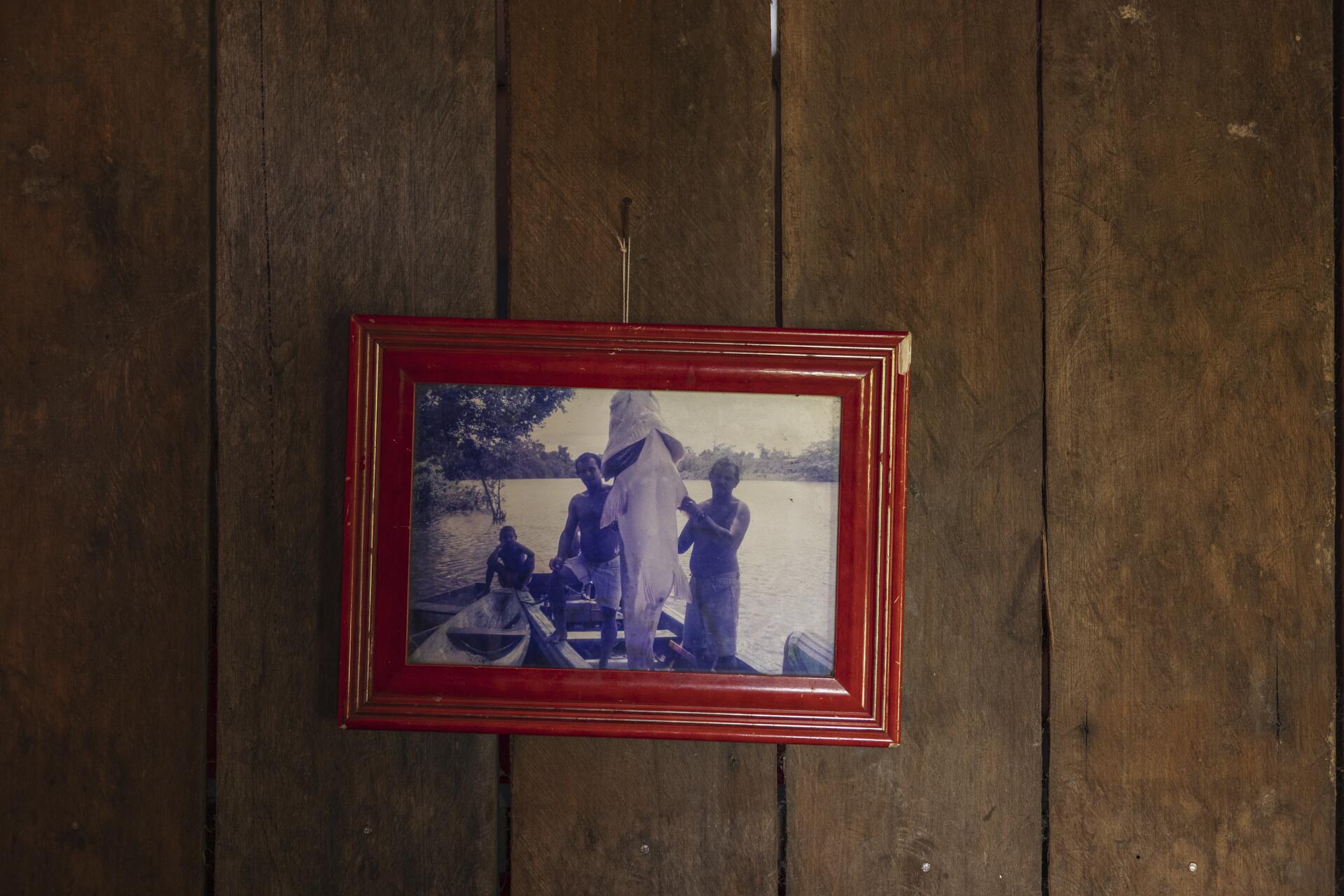
The picture of Raimundo Martins next to a young fish caught in the Xingu River on the wall
of his house is a register of the era before Belo Monte, when the fish, like the residents of the
Big Bend of the Xingu, were healthy. PHOTO: LALO DE ALMEIDA/FOLHAPRESS
The balance mentioned by Jansen used to be evident in the Xingu’s spawning grounds. This is a meeting point between space and time, an area of forest, full of edible fruit that falls into the river. But it is being ruined by the dam. There are hundreds, perhaps thousands of these spots in the Big Bend of the Xingu that are no longer any good as a refuge for the reproduction of aquatic species, because the Belo Monte power plant uses one of the Amazon’s largest rivers as if it were its own private water tank. In order to hatch and become young fish, the eggs need to remain in the water, which means Odilo’s spawning area would have to remain flooded for at least the three months required for the small fish to develop. With the Pimental dam, which is the plant’s main one, diverting almost all of the region’s water, this process has not occurred at least since 2015, when Ibama gave its permission for the first turbine to operate.
“What has now been documented by the indigenous and researchers of the Big Bend of the Xingu – in audio, in video and in photos – is a real disaster. The curimatá spawned on a massive scale. Afterwards, the eggs were left exposed on land. All the effort to migrate and spawn in floodable environments was lost. These fish will only produce more eggs next year. If it is a species that only spawns once in its life cycle, there will be no more reproduction. It is a tragedy that was predicted by independent researchers and indigenous riverside people. The hydrographs that are in place do not allow the river to function at even a minimum ecological level and this will lead to the breakdown of the Xingu’s social-ecological system, which has operated for thousands of years,” explained Juarez Pezzuti, who has a PhD in ecology and is a researcher and professor at the Center for Higher Amazonian Studies at UFPA.
The hydrograph which Juarez refers to is the apportionment of the river’s waters between the hydroelectric plant and the needs of the Big Bend’s ecosystems. According to the alternating year proposal of the company that manages the hydroelectric plant, in one year 4,000 cubic meters per second would be released, which they call the “hydrograph A”, pattern whilst in the following year, 8,000 cubic meters per second would be released under the so-called “hydrograph B”. But there is no data available that proves these volumes of water can ensure the reproduction of life in the region. Nevertheless, the company’s hydrographs were fully accepted by Ibama in Belo Monte’s preliminary license in 2010.
For a long time, these shares have been denounced by residents, scientists, and the Federal Public Prosecutor’s Office for causing an ecological and humanitarian crisis. In 2019, Ibama’s technical staff agreed the plant could not continue leaving the river without water, at the risk of destroying socio-biodiversity. They recommended the adoption of a provisional hydrograph, with more water for the Xingu: 15,000 cubic meters per second at the peak point of the flood season. This new share was adopted in 2020. In 2021, when Eduardo Bim was the Institute’s president, he accepted an agreement with Norte Energia, the plant’s concessionaire, to keep just 8,000 cubic meters a second while supplementary studies were conducted. These studies are now being assessed by Dilic’s technical team.
Meanwhile, the drought regime imposed on the Xingu continues. Even though the level of the river is gradually rising, it’s always well below what it would be if the natural flooding were taking place. According to Josiel Juruna, what was seen in Odilo’s spawning ground is probably being repeated in other spawning areas where the topography is similar. “It’s a low spawning area,” he explained. “So even if the river doesn’t rise high enough to flood, when a heavy rain occurs, it floods. Then the female fish that were waiting for the signal come in to spawn. But, immediately afterwards, the rainwater will run off and the eggs end up being left on dry land,” he said. Therefore, the rainwater would only keep the spawning grounds flooded if the river was high enough to maintain the nursery in ideal conditions. There is another problem that is taking place during the period in which the waters rise. According to Josiel, there are spawning grounds that the fish look for in November, while others are sought in December, and so on. If the river no longer behaves in accordance with the fish’s reproductive cycle, you get an imbalance, which has now led to the death of millions of eggs.
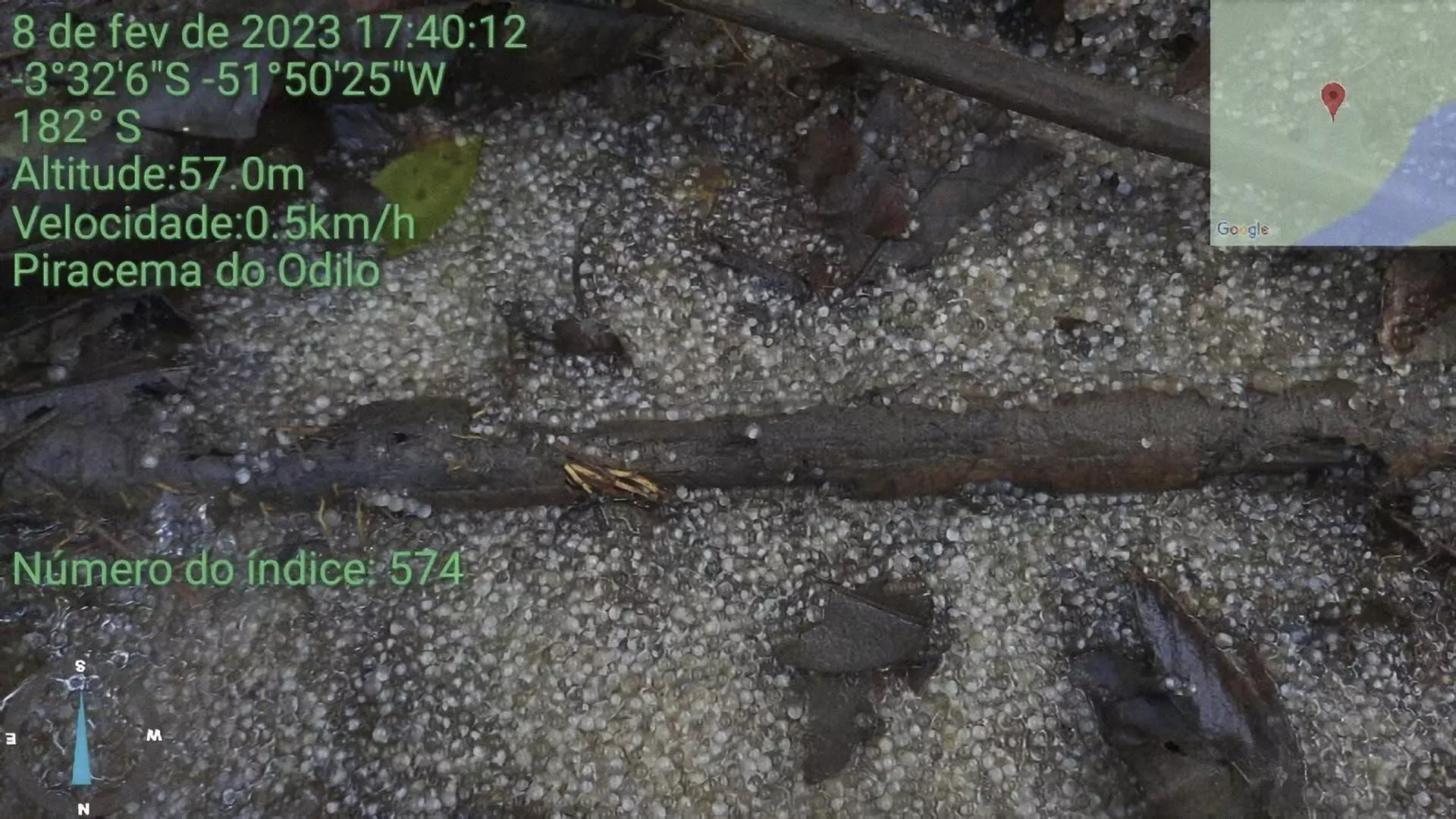
When the riverbed dried up due to the unequal apportionment of the water by the
hydroelectric power plant, the river became a fish tomb. PHOTO: INDEPENDENT TERRITORIAL
ENVIRONMENTAL MONITORING OF THE BIG BEND OF THE XINGU (MATI-VGX)
The researcher Thais Mantovanelli, who is with the Socio-Environmental Institute (ISA) and has a doctorate in anthropology from the Federal University of São Carlos as well as being one of the coordinators of independent monitoring of the Xingu’s Big Bend, stresses the importance of the daily checks carried out by indigenous and riverside people in the region. “If they hadn’t alerted us that the curimatá would be going up the spawning grounds, this ecocide would have probably gone unnoticed,” she says. “It is very characteristic that the Yudjá, upon witnessing the tragedy of this massive death toll, describe the ecocide as mothers whose newborn children have been murdered. They speak of the mothers who have just given birth and who know that their offspring will die. For the Yudjá and the riverside people, the Xingu is father and mother, a river that runs through their veins, which is the basis of their very existence from their earliest childhood.” The way Mantovanelli sees it is that upon witnessing this ecocide, these people who fight for the life of species in the Xingu Big Bend, against the impacts of the enterprise, accept the same risk for themselves, even of of death. “The dead eggs that we saw would be the fish that would grow up together at the same time as the people’s sons and daughters who are born in the territory. For the indigenous people, it is an ache and mourning similar to what we experienced with all the deaths related to the covid-19 pandemic. The dead eggs are harbingers of the future death of a group of people who have a relationship of codependency with the Xingu River’s ecosystemic flow. It is a future death that with every passing day grows closer and closer.”
For Thais and other scientists who are fighting alongside those who live in the Big Bend of the Xingu, there is a pressing need for the mitigation and compensation measures of Belo Monte to be reviewed. “We need water in sufficient quantity and quality so that life can prevail over the shadow of death that haunts this territory, this cultural landscape of synchronicity,” sums up the anthropologist. Anita Yudjá, a young indigenous woman from Muratu village, described the sense of loss in apocalyptic terms: “When I saw the videos, I cried. It is very sad to see the mothers of the fish in this situation. They will spawn and the little fish won’t be born. I think about the future, because what we see is that everything is going to end. It may not be now, but it will end.”
In the statement sent to SUMAÚMA, Norte Energia seems to be putting the blame for the carnage of millions of fish eggs rotting on dry land in the middle of the rainy season on the rain and the fish themselves. “Norte Energia, which is a private company and the concessionaire of the Belo Monte Hydroelectric Plant, wishes to make it clear that the occurrence of fish eggs on the banks of a watercourse in the Big Bend of the Xingu region is not related in any way whatsoever to the project’s operation. There were no operational maneuvers at the plant that would have caused constant oscillations in the water level, and during this flood period, the company has been gradually increasing the Xingu River’s flow in this region. According to ichthyofauna specialists, this occurrence may be related to a natural event: the rapid one-off change in the water level due to the large volume of rainfall in the region on February 7, 2023 – which spurred the females that were in the region to spawn, and which, after the river returned to the level observed before the rain, caused the eggs to remain on dry ground. The information that they are eggs of the curimatá species (an Amazonian fish that is very abundant in the Xingu River) reinforces the specialists’ analysis. Among the reproductive characteristics of this species is the hatching of eggs within 16 to 20 hours (which shows that the drop in the water level occurred prior to this period, since the eggs were whole); and the production of a large quantity of eggs. However, the correct identification of the species requires proper laboratory analysis.”
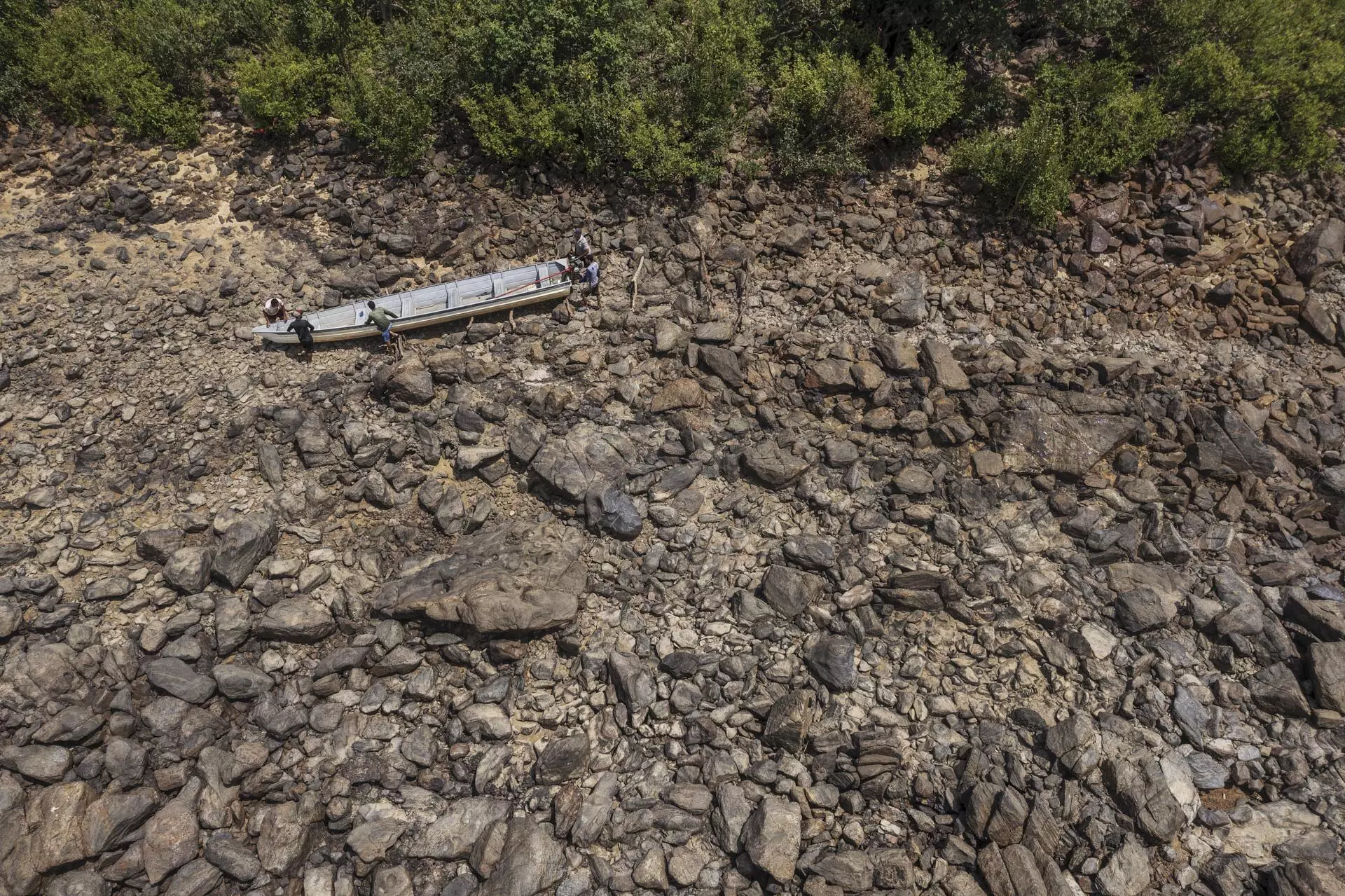
FISHERMEN DRAG THEIR BOAT OVER THE ROCKS TO CROSS A RAPIDS ON THE XINGU RIVER
WHERE THE WATER LEVEL IS LOW. PHOTO: LALO DE ALMEIDA/FOLHAPRESS
The company’s statement does not identify the ichthyology experts who were consulted. Nor does it give any explanation as to why the “natural event” of Amazon rains, which have occurred for thousands of years at the same time, was unable this time round to keep the spawning grounds flooded or ensure the curimatá eggs hatched to populate the Xingu. Since Ibama granted Norte Energia a license to operate its turbines in 2015, the gap between the company’s words and the reality of life that turns into death in the Xingu’s Big Bend region has widened with every passing year.
Spell check (Portuguese): Elvira Gago
Translation into Spanish: José Luis Sansáns
English translation: Mark Murray
Photography editing: Marcelo Aguilar, Mariana Greif and Pablo Albarenga

